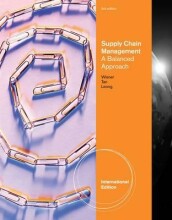Output Data Analysis for a Single System - Statistical Analysis for steady-state parameters
24 important questions on Output Data Analysis for a Single System - Statistical Analysis for steady-state parameters
What is the tradeoff in choosing the warm-up period?
- If l is chosen larger than necessary, \hay{Y}(m,l) will probably have an unnecessarily large variance.
For what do we need the Welch procedure?
Determine a time index l such that E(Y_i) is approximately v, for i > l.
Advantages replication/deletion approach for means:
2. It is the easiest approach to understand and implement.
3. This approach applies to all types of output parameters.
4. It can easily be used to estimate several different parameters for the same simulation model.
5. This approach can be used to compare different system configurations.
6. Multiple replications can be made simultaneously on different cores within a single computer or on different computers on a network, provided that the software being used for simulation supports this.
- Higher grades + faster learning
- Never study anything twice
- 100% sure, 100% understanding
Objection against replication/deletion approach:
(Usually not a problem due to the relatively low cost of computer time).
Criticism replication/deletion approach:
What are two general strategies for constructing a point estimate and CI for v?
2. Sequential procedures.
Fixed-sample size procedure:
List six fixed-sample-size procedures for constructing a point estimate and confidence interval for v.
2. Batch means: approximate IID samples
3. Autoregressive : estimate auocorrelations
4. Spectral : estimate autocorrelation
5. Regenerative: regeneriation points, true IID
6. Standardized time series, batches, assumptions
Advantage: only one or no warmp-up period
Each method: variants for choices of parameters and confidence intervals
Potential difficulties of Batch means approach:
Too small: correlated batch means, low coverage.
Too large: few observations, low precision.
What do the autoregressive method and the spectrum analysis have in common?
Why is the spectrum analysis difficult?
- There is no definitive procedure for choosing the value of q.
Idea regenerative method:
Difficulties regenerative method:
What does the standardized time series method assume?
Potential difficulties Standardized Time Series approach:
Why is it interesting to see how the five fixed-sample-size CI approaches perform in practice?
Conclusion performance fixed-sample-size approaches:
2. The appropriate choice of the sample size would appear to be extremely model dependent and thus impossible to choose arbitrarily.
3. For m fixed, the methods of batch means, standardized time series, and spectrum analysis will achieve the best coverage for n and f small.
Why is a sequential procedure needed?
Why do we consider the estimation of steady-state parameters other than the mean?
Parameters of the steady-state distribution of interest:
2. q-quantile.
What are the difficulties in applying Welch's procedure?
2. The choice of l is somewhat subjective.
3. Choice of m (too large can be a waste of computer time)
Where must the length of the warm-up period be proportional to?
- 1/(1-rho)^2, where rho is the load of the resource.
- Squared coefficients of variation.
- Size of network, i.e. number of nodes.
How does the Welch procedure work?
2. Plot Yibar, which is the average of Yji per replication.
3. If further smoothing of the plot is necessary, define the moving average Yibar(w), where w is the window.
4. Plot Yibar(w), and choose l to be the i beyond which the line appears to have converged.
What is the goal of the Jacknife estimator of ratio of expectations and how to calculate the estimator?
Goal: estimate E{y}/E{X}
Jacknife is less biased than the classical point estimator
The question on the page originate from the summary of the following study material:
- A unique study and practice tool
- Never study anything twice again
- Get the grades you hope for
- 100% sure, 100% understanding































